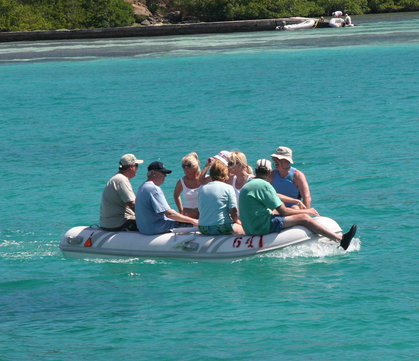HOW TO PREVENT OVERLOADING
The first step to avoid overloading is to know and understand how much weight your specific make and model can handle. There should be a capacity plate near the operator’s area or on the transom of the boat. Watercraft less than 20 feet are required to have a capacity plate. Watercraft less than 26 feet are required by the National Marine Manufacturers Association to have a capacity plate to qualify for a NMMA certification.
This capacity plate will state the maximum weight capacity in pounds and/or the maximum number of people permitted. You should never exceed either of these recommendations. The manufacturer of your vessel knows what your boat can handle safely. Keep in mind that the weight recommendation includes more than people – equipment, accessories and any additions or improvements to the boat contribute to the overall weight.
---------------
NO CAPACITY PLATE?
If your boat does not have a capacity plate, you can calculate it. Although a direct recommendation from your manufacturer is more accurate, the formula below can help you as well.
Number of people = boat length x boat width / 15
For example, let’s say your boat has a length of 20 feet and a width of 8 feet. You would then multiply 20 x 8, which gives you 160. Then, divide 160/15, which gives 10.6. This means you can safely have approximately 10 people on board at roughly 150 lbs. each.
---------------
OTHER CONSIDERATIONS
You should also consider your boat’s maximum horsepower rating when repowering the boat and avoid exceeding this limit. The capacity plate will display this as well.
Finally, make sure your passengers are all wearing life jackets. Personal flotation devices are very important to boating safety. Check to make sure they are in good condition and U.S. Coast Guard approved. In addition, make sure to have the required navigation lights, fire extinguishers, an emergency indicating radio beacon, a flashlight, flares, and a first-aid kit.

